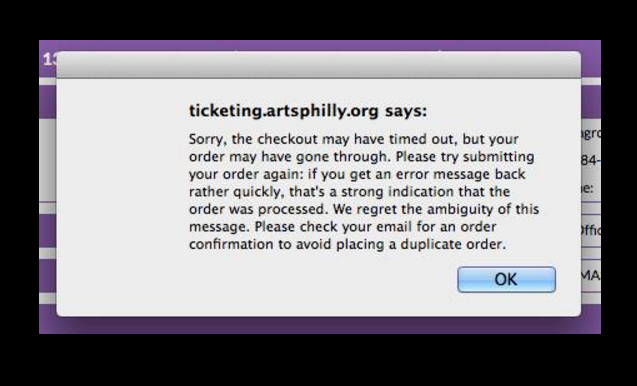A spinning wheel of doom churning on for an eternity and a half. A bizarrely ambiguous error message that did little to ease my worrying mind. Two blunt tweets that should have been answered in the name of good customer service, yet remain ignored as of now.

It’s the kind of cryptic misfortune that belongs kept stored away in dreamland, not rearing its head during a business transaction.
Yes, you heard me right. A business transaction, involving me, my credit card, and a reputable performing arts center, separated by only a computer screen.
You might not believe it, but when all of this happened, I was simply trying to purchase a pair of tickets for an upcoming production at Annenberg, University of Pennsylvania’s performing arts center. They’ve got their own unique, rich history, not to mention their own mission, staff, and board. Their customer experience, though, leaves a lot to be desired, and I couldn’t help but draw parallels between the coldly impersonal encounter and the ins and outs of the donor experience. An experience I encourage nonprofits to capture, so that they know it like the back of their hand.
It would behoove Annenberg to slip on their customers’ shoes and take a walk in them so that they can fully grasp the transaction’s process from start to finish. You can’t expect to create systemic improvements without knowing what your current systems involve, and the same goes for your donation processes. What does it look like to a donor when they decide to make a gift and follow through? How many clicks does it take, from the beginning to the end? What sorts of messages do they receive, both during and after?
These questions are crucial, and yet I’m forever seeing evidence of their neglect in nonprofit arts organizations.

















 I can’t wait to meet with you personally.
I can’t wait to meet with you personally.
Comments on this entry are closed.